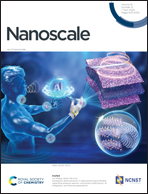Phase transition in WSe2−xTex monolayers driven by charge injection and pressure: a first-principles study†
Abstract
Alloying strategies permit new probes for governing structural stability and semiconductor–semimetal phase transition of transition metal dichalcogenides (TMDs). However, the possible structure and phase transition mechanism of the alloy TMDs, and the effect of an external field, have been still unclear. Here, the enrichment of the Te content in WSe2−xTex monolayers allows for coherent structural transition from the H phase to the T′ phase. The crystal orbital Hamiltonian population (COHP) uncovers that the bonding state of the H phase approaches the high-energy domain near the Fermi level as the Te concentration increases, posing a source of structural instability followed by a weakened energy barrier for the phase transition. In addition, the structural phase transition driven by charge injection opens up new possibilities for the development of phase-change devices based on atomic thin films. For WSe2−xTex monolayers with the H phase as the stable phase, the critical value of electron concentration triggering the phase transition decreases with an increase in the x value. Furthermore, the energy barrier from the H phase to the T′ phase can be effectively reduced by applying tensile strain, which could favor the phase switching in electronic devices. This work provides a critical reference for controllable modulation of phase-sensitive devices from alloy materials with rich phase characteristics.



 Please wait while we load your content...
Please wait while we load your content...